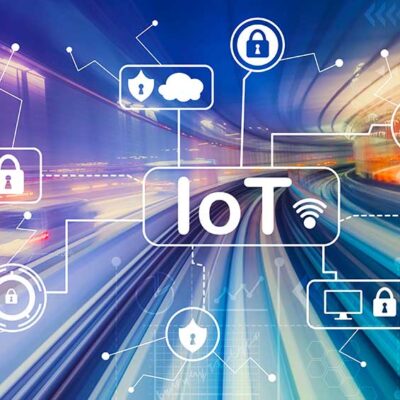Thanks to partnerships with recognised players in the IoT market, Siveco Group, editor of maintenance software, has developed a platform using technologies linked to connected objects and Artificial Intelligence: Coswin IoT. The solution enables the collection of data from sensors in the field and their integration into the CMMS in order to envisage operational predictive maintenance solutions for industrial companies.

Can you explain why Siveco Group decided to take an interest in IoT?
It all starts with an observation. A few years ago, we saw the appearance of the word industry 4.0 or factory of the future. Behind these “labels” is a whole range of new technologies aimed to optimising and making profitable production processes – including maintenance. It is important to understand what IoT is used for in our business: it is not simply a matter of connecting a sensor to a machine, but of collecting data and integrating it to CMMS. While the use of sensors is not new, the new capabilities offered by IoT technologies have revolutionized the vision of the maintenance.
Can we talk about predictive maintenance today?
In the past, there were two main types of maintenance, with radically opposed strategies. The first type, called programmed or planned maintenance, consisted of anticipating wear and tear or breakage of machines, in order to intervene before the breakdown and avoid the production failure and the associated costs. The second, corrective or just-in-time maintenance consisted on the contrary in not intervening and waiting for the breakdown to repair or replace.
Today, IoT changes everything. We talk about predictive or anticipatory maintenance. Sensors collect data in real time. They are able to measure information on the machine (use, counting, etc.) and at the same time agglomerate data on its environment such as the level of heat, hydrometry, shocks… The combination of all these factors makes it possible to measure the wear and tear of the machines much more precisely and therefore recalibrate the company’s policy accordingly.
Let’s take the example of manufacturers in the aeronautic industry where the slightest production recall costs millions. One of the issues may be the monitoring of tools such the drills that are used for piercing precise holes in aircraft wing components. These can suffer slight deformations that are not easily visible to the human eye but which can cause significant defects in the parts produced. By connecting them to the IoT, it is possible to continuously monitor their wear and tear in order to detect when the tool needs to be repaired to avoid any manufacturing defect.
Why should companies adopt a system combining IoT and CMMS?
The protocols for deploying an IoT system are simple and very fast: we can connect an industrial park in just a few days and immediately measure significant ROI, which was not necessarily the case before.
In addition to optimising maintenance management, the organisation of work schedules for technical teams is also improved. Thanks to the cross-referencing of environmental factors and machine operating times, jobs are scheduled at the optimum time to cause the least possible disruption of production!
Let’s take for example chemical baths. Usually, teams are assigned to measure the PH at regular intervals. If the last measurement is wrong, then the entire bath has to be emptied, this results in costs for disposal, refilling and also a strong impact on the environment. By using IoT sensors, it is possible to monitor each bath continuously and adjust the PH when necessary. This results in not only an economic gain but also an ecological correction of the human footprint, which is not negligible.
You were telling us about corrective maintenance, is this vision still relevant today?
This is not only the case. In this strategy, we used to wait for a breakdown to intervene in order to limit maintenance costs. Today, we can decide not to intervene at all. By monitoring he vital signs of the equipment (machine, plant, building…), we are able to know the normal constants, anticipate the break-down: this is also predictive maintenance. Thus, we intervene only when necessary without risking production losses.
Is artificial intelligence also a topic for predictive maintenance?
Completely! The combination of IA and IoT not only allows astronomical amounts of data to be collected, but also to be sorted and connected in order to draw conclusions. In this way maintenance systems learn as they receive new data to become more and more accurate.
Let’s take the example of wind turbines: the sensors allow monitoring of their vibration measurement but also of other data such as weather, temperature, humidity, wind. Artificial intelligence algorithms will then sort out useful and useless information and find correlations in order to predict with extreme precision when it will be necessary to intervene… or not!
How did Siveco Group implement IoT in its maintenance solutions?
As soon as these new methods appeared, Siveco Group participated in the think tanks organized around the industry 4.0 in order to act for the future. Following the good practices that emerged, we quickly created a line of products called Coswin Smart Generation, including the Coswin IoT platform.
By joining forces with partners who are experts in IoT technology, we provide our customers with our expertise and the associated technology to better manage their maintenance. Our role is to collect the data transmitted by sensors to integrate it into the CMMS system to implement predictive maintenance.
Interview with an expert – Laurent Crétot, Sales & Marketing Director at Siveco Group





